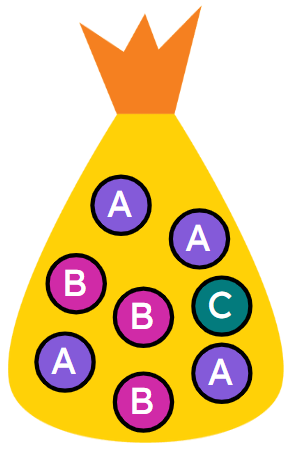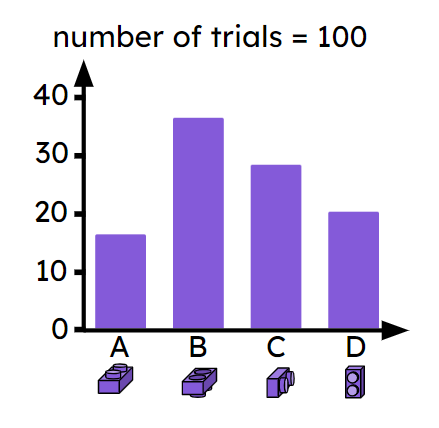Myths about teaching can hold you back
- Year 9
Experiments to determine how likely an outcome is
I can determine the likelihood of an outcome by designing and carrying out an experiment.
- Year 9
Experiments to determine how likely an outcome is
I can determine the likelihood of an outcome by designing and carrying out an experiment.
These resources will be removed by end of Summer Term 2025.
Switch to our new teaching resources now - designed by teachers and leading subject experts, and tested in classrooms.
These resources were created for remote use during the pandemic and are not designed for classroom teaching.
Lesson details
Key learning points
- An experiment can be designed to determine how likely an outcome is.
- An experiment can be carried out and the outcomes recorded.
- The outcomes can be considered and the likelihood of each outcome stated.
Keywords
Experiment - An experiment is a repetition of a trial multiple times in order to observe how often each outcome occurs.
Common misconception
A small number of trials in an experiment is enough to provide conclusive findings.
Even in situations where we know that the different outcomes of a trial are equally likely happen, one outcome may happen more often than the others. E.g. when we flip a coin 10 times, we don't always get the exact same number of heads and tails.
To help you plan your year 9 maths lesson on: Experiments to determine how likely an outcome is, download all teaching resources for free and adapt to suit your pupils' needs...
To help you plan your year 9 maths lesson on: Experiments to determine how likely an outcome is, download all teaching resources for free and adapt to suit your pupils' needs.
The starter quiz will activate and check your pupils' prior knowledge, with versions available both with and without answers in PDF format.
We use learning cycles to break down learning into key concepts or ideas linked to the learning outcome. Each learning cycle features explanations with checks for understanding and practice tasks with feedback. All of this is found in our slide decks, ready for you to download and edit. The practice tasks are also available as printable worksheets and some lessons have additional materials with extra material you might need for teaching the lesson.
The assessment exit quiz will test your pupils' understanding of the key learning points.
Our video is a tool for planning, showing how other teachers might teach the lesson, offering helpful tips, modelled explanations and inspiration for your own delivery in the classroom. Plus, you can set it as homework or revision for pupils and keep their learning on track by sharing an online pupil version of this lesson.
Explore more key stage 3 maths lessons from the Probability: possible outcomes unit, dive into the full secondary maths curriculum, or learn more about lesson planning.

Licence
Prior knowledge starter quiz
6 Questions
Q1.__________ is a single predefined test.
Q2.The likelihood of an outcome can be described as __________ if its likelihood of happening is the same as its likelihood of not happening.
Q3.Which statement describes the meaning of 'unlikely'?
Q4.Which term belongs at point E on the scale of likelihoods?

Q5.A bag contains counters that are each labelled with a letter from A to C. One counter is chosen at random from the bag. Which term describes the likelihood of choosing the letter 'B'?

Q6.A regular six-sided dice is rolled. Match the events with the term that describes their likelihood of happening.
likely
certain
unlikely
impossible
even chance
Assessment exit quiz
6 Questions
Q1.__________ is a repetition of a trial multiple times in order to observe how often each outcome occurs.
Q2.The __________ an experiment contains, the more confident you can be about any conclusions made based on its results.
Q3.During an experiment, a toy brick is dropped 100 times and its landing position is noted. Based on the results in the bar chart, which way is the brick least likely to land when it is dropped?



